Genre: Sports Developer: XYZ Productions Publisher: Electronic Arts Players: 1-4 Released: 1997
Say what you want about Electronic Arts. Whatever platform it supports, it supports it until the very end. The FIFA series in particular is notorious for that, since some of its games usually mark the end of an era for certain consoles. This year, FIFA 14 will in all likelihood be the last game to officially be released for the PS 2 (as well as TWO of its successors, the PS3 and PS4 respectively). FIFA 07, meanwhile, had been among the 20 or so final games released for the inaugural XBOX. Before that, FIFA 2005 rang out the PSX era of games (at least in the U.S.), and a few years before that, FIFA ’98: Road to World Cup, aside from being part of the last wave of 16-bit games in total, was the very last title that was officially released for European Mega Drive consoles. So while the series originated on Sega’s 16-bit flagship console, it would also have the honor of carrying the platform to its commercial grave.
“So what?” some of you may argue. “EA is notorious for just re-hashing its yearly series, simply slapping a roster update on an old engine and calling it a day.” True, on some of the ’98 releases in the EA stable this argument may stick, especially when it comes to the 16-bit platforms. But is that really the case with FIFA ’98? Naturally, due to limited capabilities Mega Drive and Super Nintendo versions wouldn’t have the licensed title music the other, more modern incarnations had. But what about the engine? What about the presentation? What can be said about the scope of FIFA ’98 when compared to its predecessors on the Genesis platform? How well does the game stack up to other soccer games on the Sega console?
Well, it’s true that the Genesis rendition of FIFA ’98 doesn’t boast new mechanics. Under the hood it’s the same engine you’ve encountered in previous incarnations, albeit with a few notable tweaks (more on that later). Presentation-wise, however, a lot has changed at first glance. Most obvious is the “Road to World Cup” mode, where, for the very first time in the FIFA series (as well as in a soccer game on the Mega Drive), you can play the FIFA World Cup in its entirety. This doesn’t just include the tournament in itself but also the entire qualifying stages, with all the rules regarding participation applied to the different regions (the qualifying requirements in the European UEFA federation are fundamentally different that those in the North and Central American COMNEBOL, for example). This catches the scope of world’s most important soccer championship quite nicely. Also, the game contains 172 teams and allows gamers to compete in 11 different leagues from all over the world, including (some, not all) licensed player names from the 1997/98 season. So, here’s a big plus in terms of content and immersion.
The game also allows you to create custom players and custom teams. It’s entirely possible to build your local home team (or your own fantasy squad), though a custom player has, overall, only mediocre skills at best with no option to improve. What’s more, you can only have custom teams compete in friendly matches, not in the world championship or national leagues, which makes creating a whole new gang kind of pointless. You can, however, use another option to transfer your customized players into already existing teams or inject all your favorite star players into one specific squad. This makes it absolutely possible that a player from Argentina may compete for the national selection of South Korea, for example. So if you want to create your personal super troop, you may (ab)use the “transfer players” options and cheat the heck out of the game.
Doing so may offset the fact that there is one particularly odd change in the game: there are no difficulty options! Apparently, the programmers figured that if you have teams of different strength, then that alone is enough to determine your own handicap for the game. Weird, but given the vast differences between the weakest and strongest teams in the game and the ability to pitch yourself in friendly matches against anyone you like, it’s not too big a deal. Plus, the game offers the ability to practice standard situations and essential controls so newcomers to the series may ease into the mechanics without too much trouble. Aside from that, the options are as vast as usual: play length (2×2 to 2×45 minutes), penalty and injury settings, pitch condition – all these are familiar settings and handled as usual.
Sounds like a lot of content now, doesn’t it? One wonders how all of this could be crammed into a single cartridge. Here’s where we come to the hitch. In order to do so, the developers had to cut a lot of corners. The gameplay mechanics are practically the same as in the ’96 edition, with one notable absence: the support for six-button support has been eliminated. True, some folks felt anyway that the additional maneuvers (which can still be performed on three-button pads with the right combinations anyway) only complicated matters, but eliminating them outright seems very odd, as if the gameplay were actually regressing instead of developing. Also, while the matches run at a suitably fine speed, certain frames of animations seem to have been cut out. Whenever there are many players on screen, such as during corner kicks with many players in front of the goal, frames to start to skip and shots are seemingly made without any player actually touching the ball. This is even more confusing when you count in the fact that your teammates now have more of a life of their own, so when a ball suddenly changes direction you can never be sure what the cause was. You? A teammate of yours? An opposing players? It’s hard to tell since there was a sudden direction change, but no player seemed to touch the ball. Needless to say, that this hurts the gameplay big time. (Another oddity, by the way, is that you can substitute a player back into the game after you’ve already taken him out, an oversight I never noticed in any of the previous FIFA games).
There is quite a bit more functionality that were removed from the game. In earlier FIFA games, whenever a goal was scored or the goalie caught a ball, you could watch all players automatically run back into position. In FIFA ’98, the screen fades to black instead to save showing the extraneous action. Needless to say, this is a rather jarring disruption in the gameplay, especially after goals where the screen stays black for a notably longer period of time. Furthermore, during free kicks and goal kicks the preview window where you could roughly aim your shots have been removed as well. So on those occasions you now have to make a shot in the dark, so to speak. At least during corner kicks and throw-ins these helpful assistants are still implemented.
The controls themselves have taken a hit as well, as there’s a notable lack of precision when compared to the ’95 and ’96 editions. Sometimes, there appears to be a noticeable delay between button presses and on-screen action. Other times, the direction of shots is wildly inaccurate: Quite often I wanted to make a short pass to my left, but the ball went to the right instead. Other times direct shots at the goal seemingly went into an entirely different direction than intended. Combine that with the aforementioned fact that your teammates sometimes act without prompting, and things can get pretty confusing. A propos acting without prompting. Sometimes, your teammates foul an opponent out of no discernible reason. It’s very odd when your star player gets booked for a foul after a goal kick when you didn’t even touch the controller. Maybe the dodgy controls are to blame, and the player received a delayed prompt from when you told your goalie to kick the ball away. At least scoring seems to be a bit easier than before. If you shoot at the goal from an angle as hard as you can, chances are that the goalie simply drops the ball right in front of him, making it way easier to make the shot on the rebound. Though after doing this for a while, this way of scoring kind of feels like exploiting the game.
It’s nice to see that in its last 16-bit incarnation FIFA ’98: The Road to World Cup managed to cling to a few of the strengths of the series. The presentation’s well done, the graphics are detailed and nice to look at, and the sound is adequately atmospheric, more so than in most other soccer games on the Genesis. The additions like practice mode, the create-a-player menu and especially the entire World Cup Qualifier seem like a very neat idea as well. However, the price it took to cram all these extra features into one cartridge seem rather steep: The gameplay is worse than in the ’95 or ’96 editions and the constant interruptions to the game flow due to all these fades to black deeply hurt the immersion factor. None of the 16-bit FIFA games have aged particularly well, but even if you disregard that notion, FIFA ’98 seems like a major regression when compared to its predecessors on the Genesis. It’s still an above average soccer game for this particular platform, but when compared to other games in the same series, it’s definitely one of the worst.

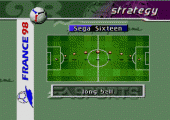
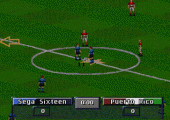
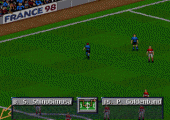
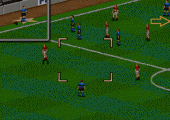
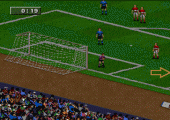
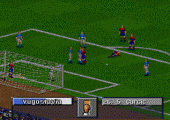
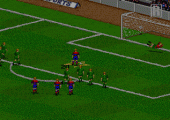
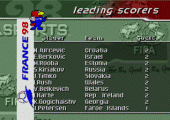
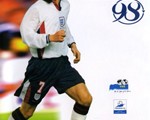
Recent Comments